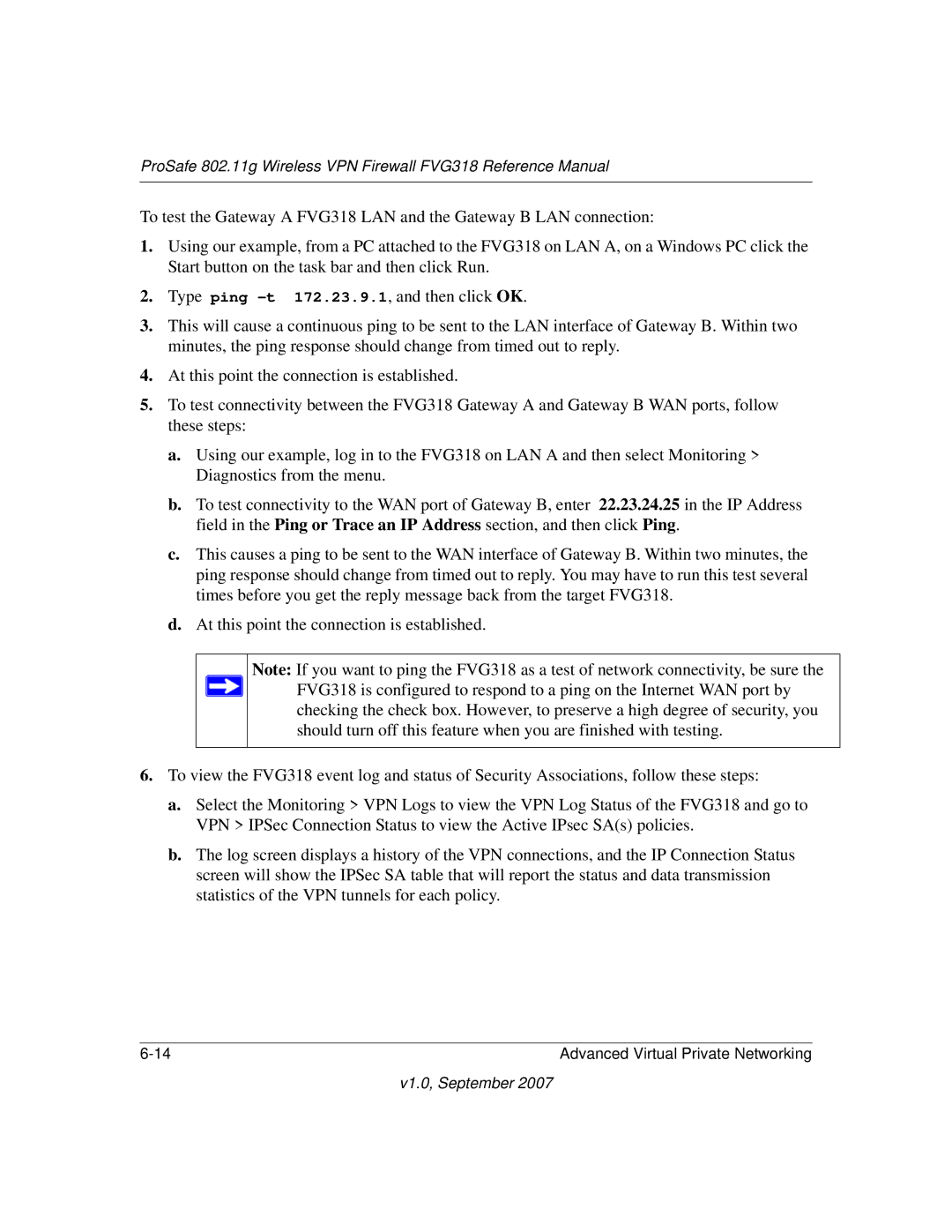
ProSafe 802.11g Wireless VPN Firewall FVG318 Reference Manual
To test the Gateway A FVG318 LAN and the Gateway B LAN connection:
1.Using our example, from a PC attached to the FVG318 on LAN A, on a Windows PC click the Start button on the task bar and then click Run.
2.Type ping
3.This will cause a continuous ping to be sent to the LAN interface of Gateway B. Within two minutes, the ping response should change from timed out to reply.
4.At this point the connection is established.
5.To test connectivity between the FVG318 Gateway A and Gateway B WAN ports, follow these steps:
a.Using our example, log in to the FVG318 on LAN A and then select Monitoring > Diagnostics from the menu.
b.To test connectivity to the WAN port of Gateway B, enter 22.23.24.25 in the IP Address field in the Ping or Trace an IP Address section, and then click Ping.
c.This causes a ping to be sent to the WAN interface of Gateway B. Within two minutes, the ping response should change from timed out to reply. You may have to run this test several times before you get the reply message back from the target FVG318.
d.At this point the connection is established.
Note: If you want to ping the FVG318 as a test of network connectivity, be sure the ![]() FVG318 is configured to respond to a ping on the Internet WAN port by
FVG318 is configured to respond to a ping on the Internet WAN port by
checking the check box. However, to preserve a high degree of security, you should turn off this feature when you are finished with testing.
6.To view the FVG318 event log and status of Security Associations, follow these steps:
a.Select the Monitoring > VPN Logs to view the VPN Log Status of the FVG318 and go to VPN > IPSec Connection Status to view the Active IPsec SA(s) policies.
b.The log screen displays a history of the VPN connections, and the IP Connection Status screen will show the IPSec SA table that will report the status and data transmission statistics of the VPN tunnels for each policy.
Advanced Virtual Private Networking |
